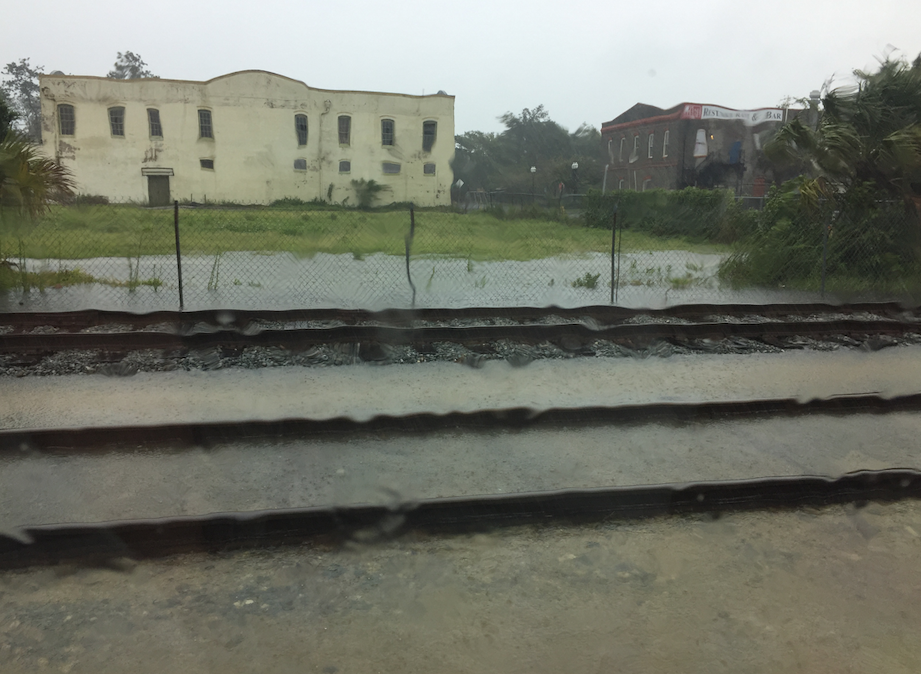By John Haughey
The Center Square
September 16, 2020

Florida does not have the luxury to engage in ideological debates over climate change when it comes to rising sea levels, according to the incoming state Senate president and speaker of the House.
“With 1,350 miles of coastline, relatively low elevations, and communities built largely on top of former swampland, Florida remains particularly vulnerable to the risk of flooding caused by sea level rise,” Sen. Wilton Simpson, R-Spring Hill, and Rep. Chris Sprowls, R-Palm Harbor, wrote in a Florida Politics op-ed. “Over the last several years, we have seen that risk grow exponentially.”
At risk: $300 billion in taxable property value in seaside communities projected to be underwater by century’s end.
“Over 20 percent of (Florida) homes, the largest single investment for most families, have a greater than one-in-four chance of flooding over a 30-year mortgage. Unless we take steps to curb this risk, those numbers will likely grow,” Simpson and Sprowls wrote.
Florida lawmakers reviewed several bills related to rising sea levels during the 2020 legislative session.
Adopted unanimously by both chambers, Senate Bill 178 prohibits local governments and the state from building a coastal structure without a sea level impact projection (SLIP) study approved by the Florida Department of Environmental Protection (DEP) and funded by the new Florida Resilient Coastline Initiative (FRCI).
A bill adopted by the Senate to create a Florida Office of Resiliency and a nine-member sea level task force, however, failed to gain traction in the House.
The 2021 Legislature’s GOP leaders said lawmakers will continue to develop sea-level mitigation strategies in the upcoming session.
“Unlike the overpriced and entirely unrealistic ‘Green New Deal,’ Florida remains focused on finding solutions that actually work,” Simpson and Sprowls wrote, noting the FRCI is among “solutions that actually work,” with $2.1 million in grants already issued to 30 coastal communities in 17 counties.
Simpson and Sprowls outlined three policy goals.
“First, we want to elevate flood mitigation as a critical part of Florida’s public safety infrastructure,” they wrote. “We should approach these projects systematically by assessing long-term needs, making sound engineering decisions and being fiscally disciplined in when, where and how we spend taxpayer dollars.”
Coordinating with federal agencies is vital, Simpson and Sprowls said, noting the U.S. Army Corps of Engineers, the Federal Emergency Management Agency and the Federal Department of Housing and Urban Development have “made significant funding available for resilience in the context of rebuilding hurricane-impacted areas.”
Most notable is the Corps’ proposed $4.6 billion plan to build 6 miles of 6-to-13-foot “flood walls” in south Florida, including within Biscayne Bay.
“These are great first steps toward an enhanced federal-state partnership; however, given the size and importance of our state, Florida should be receiving a greater proportion of existing funds allocated for flooding prevention,” Simpson and Sprowls wrote.
“Third,” Simpson and Sprowls concluded, “we want to address the disparate local impacts of this statewide challenge. Tampa Bay, for instance, is one of the areas at greatest risk for storm surge. Not only in the state, but in the nation.”
Ultimately, not all imperiled areas can be rescued from eventual inundation and some won’t be capable of committing the local resources to do so.
“While state government must take a leading role in this fight, we are not going to simply subsidize high-risk communities,” Simpson and Sprowls wrote. “In this area, as in many other policy areas, we believe in helping those who are willing to help themselves.”
